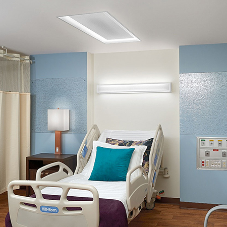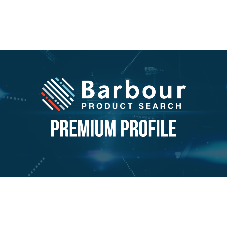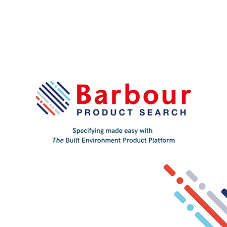We’re already starting to see a change in today’s office buildings, but what exactly will they look like in the future? It’s safe to say that the traditional office buildings are dying out. And good riddance. Businesses are becoming more and more aware of the health and happiness of its employees, and the influence this has on productivity and the business itself.
First off, we must understand that our jobs are changing. There are fewer clerical workers and more app developers and so the office building must adapt to fit this new mould. Scientific surveys are being carried out to discover what employees want from their work surroundings but also what negative impact it currently has on both their health and productivity. We should also try to take into consideration who companies want to employ. Millennials are difficult to recruit as they’re the generation of online start-ups and new small businesses. But this itself is a reason why larger companies want to employ them. You can find examples of Millennial minded office buildings in businesses such as Apple or Google, where the employee's average age is 30-31. The middle of the Millennial age range.
Here are 5 predictions on what the office buildings of the future could look like.

Design
“Designed with employees in mind”. Physical and mental wellbeing will be taken into consideration more when the offices of the future are designed. Years ago, when the supervision of employees was not assessed through CCTV or key passes, open plan rooms with rows of desks were common in many businesses. This was about hypervisibility and therefore focus out of fear but as the business world changed, so did the office layouts. We moved on to the dreaded fenced off cubicle. It was thought that the lack of distractions would increase productivity however, it left workers feeling unmotivated and uninspired. How creative can you get when you’re staring at 3 grey walls? We seem to have now adopted a combination of both; an open plan office for approachability whilst still ensuring desks have a small screen or panel between them to give employees a certain degree of separation in order to concentrate. So perhaps in the next 10 years we’ll have free environments where you’ll be able to choose or customise your work space.
Natural light and window accessibility have been recognised as very important for staff stimulation and happiness. I predict that office buildings of the future will have more of a clean, light and airy feel to them promoting a sense of freedom and inspiration. Of course, there is the obvious development of colourful ball pits and slides seeping their way into our workplaces, which sounds like fun but fails to produce long terms effects. This is a temporary side effect of the workplace development. A draft that will eventually be put in the bin; a snapchat story that will in 10 seconds be lost forever. You won’t find happiness in a hammock.

Technology
2020 will be the year that technology starts to really mature. It might not be the year we see 5G… but that’s a separate blog. We’re already embracing technology as we now better understand how it can enhance our lives; make us work quicker, more efficient, even faster. For example, portable devices that you can work on from anywhere could see us in a deskless future. This would increase our activity levels and make it much easier to collab and create. Tech not only aids us in doing our job better, but it will also help in terms of business to business relations, client presentation, and yes, workplace amenities. Not to mention the technology evolution of workplace machinery which in turn will shape our future offices.
Augmented and virtual reality could have a big role in how we converse with clients resulting in a need for our workplaces to change. Many businesses nowadays not only rely on having the latest tech, but are the latest tech. Devices, gadgets, the internet, they’re all such a large part of our lives now. So, I predict that because businesses themselves will be tech related, the office buildings will have to reflect this. As a customer, what would you think walking into a technology office and seeing out of date computers and filing cabinets? Also, the use of community hubs will become a staple in many businesses, where staff can feel like they belong and have a collective body behind them, not a corporate company watching them. In full, I think it’s fair to say that technology will take the lead in how our offices will look in the near future.

Green
And I don’t just mean more potted plants. Nature in general, is a trend that never really goes out of style and there’s a reason for that. Going back to design for a moment, the future of our offices will include naturalistic furnishings and backgrounds, bringing the outside in as this has been scientifically proven to help creativity. The Biophilia hypothesis suggests that “humans possess an innate tendency to seek connections with nature”. This could well be true as longer working hours and time spent on the internet are replacing the amount of time we spend in our natural habitats. On average, we spend 92,120 hours in the office over the course of our working lives. A little nature is needed.
In the other sense of the word “green”, I predict that businesses will start to reduce their carbon footprint and become eco-friendlier. Why? Because they’ll have to, and its’ what workers want. Many actively seek this out when looking for employment already. (Not to mention the global benefits if more companies start to do this.) So, it’s easily a way for businesses to stand out from the rest when recruiting. Staff will feel significantly better about their jobs if they know they are doing their bit for the environment. An extreme example of this is The Edge building in Amsterdam, often referred to as a smart building, it is aware of how much energy it is consuming and actually produces more electricity than it uses through walls of solar pannels. The building also hosts a number of sensors which will monitor the amount of people in the room and adjust the temperature or turn lights on and off. Could smart offices be our future?
![]()
Individuality
We are all different. And in a company, we all perform different roles but oddly enough we tend to have the same desk setups. If we aren’t to go with a deskless future, then perhaps a customised one would replace it. Employers are beginning to recognise that one system or way of working does not fit all. A Web App Developer has quite a different job to someone in Accounts. Two important jobs in the company, but still very different. I would argue that to get the most out of each and every staff member, they will all need different devices, programs and set ups. Now obviously this negates bulk buying and business discounts, so I appreciate this could be quite an expensive venture, however, companies are already putting this method into practise. How much money do you think companies could make if they were truly getting the best out of all their staff? Some people may like quiet areas where they can fully focus on more calculative tasks whilst others may prefer a busy hub of activity where they can collab and get their creative juices flowing. Either way, businesses will need to cater to both. Diversity is finally becoming more important in the work place, meaning those with mental or physical conditions are being recruited more frequently, and as a result may need specific setups to accommodate them. Should we apply this to every and make the most out of employees?

Creativity
As previously mentioned our jobs are changing and we can only assume that this will continue to do so. Many jobs nowadays require a certain degree of creativity and originality however, this can be difficult when you’re view is either 4 white walls or worse, unhappy faces. So, what makes someone creative? Well, it’s different for everyone. For some it may be exercise, a lot of larger city offices offers a range of gym facilities not just to keep their workers fit but also to encourage creativity through physical outlets. For others it could be more sensory. Producing a sensory experience in the office could be key to unlocking potential creativity and is quite simple to do. Take into consideration the 5 senses we have, sight, sound, smell, touch and taste. We’ve already talked about how sight is important in terms of having an aesthetically pleasing office environment, but what about the others? Having either motivational or even soothing music in the work place can encourage creativity. Many businesses have introduced the allowance of headphones, so you can listen to the music you know gets you in the zone. Essential oils and pleasant smells in both our homes and the office have been proven to positively affect mood, and you’re more likely to be creative if you’re happy. Providing warmth and soft textures such as rugs and sofas can give staff a homely feeling and introducing back rollers or other self-massage tools can help reduce stress. It’s obvious that food makes us happy so using food as an incentive can be another way of keeping staff happy and therefore creative. Although caution is needed as bad food can lead to overweight and lethargic workers so perhaps fruit and the occasion hit of sugar. Or the promise of going to a restaurant for lunch could be a more effective avenue.
So smart buildings seem to be the future. In short, we need a building that is customisable to staff needs. A building where you would choose to spend time. A building with some natural light, we are humans not vampires… Somewhere that enhances what we do and how we do it, and boosts a feeling of community, creativity, and collaboration. I appreciate that some of these notions may seem a tad aspirational to some however, a positive to take away from all this is that companies are already starting to put many of these theories into practise. This means we could well see these ideas filtering down into smaller companies over the next 10 years.
Related Blog Articles



crop192.png)












